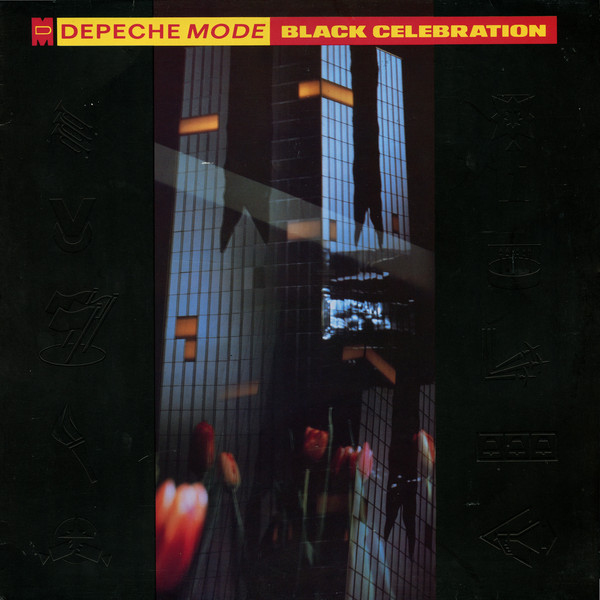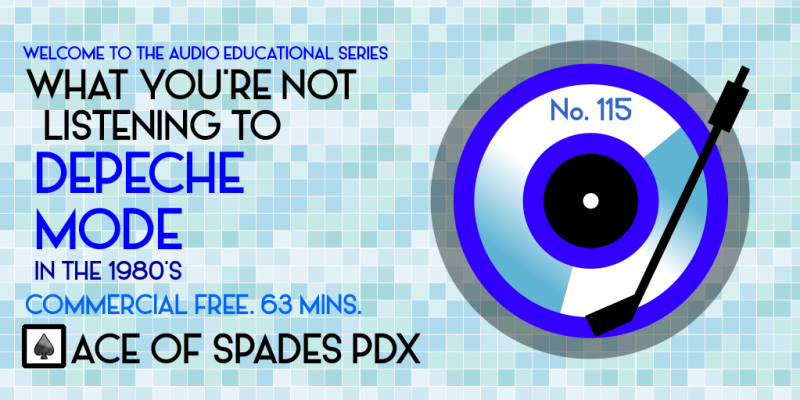Podcast: Play in new window | Download | Embed
The look back at the 1980’s career of one of the most influential electronic bands in history, Depeche Mode, before they became a huge mainstream success. #depechemode #1980s #electronicmusic
Our program this week features tracks from one of the quintessential bands from the 1980’s, Depeche Mode (which loosely translates to “the latest fashion” in French). Initially starting out as an electronic pop act in 1980, they officially released their first album a year later.

The group formed in Basildon, a seaside town in the Essex area on the eastern coast of England. The initial line-up consisted of Vince Clarke, Andy Fletcher and Dave Gahan, the latter three still in the group four decades on. Their early sound was a mix of groups the band loved and were influenced by, including the Cure, Kraftwerk and Ultravox, all of which employed moody keyboards in their sound.

We will be covering tracks from their very first release on the Some Bizarre LP (a compilation of then-emerging British electronic artists, which also included Soft Cell of ‘Tainted Love” fame) all the way through their triumphant performance on their Music for the Masses Tour, which saw them filling stadiums.

Interestingly, as the band started to peak initially, founder Vince Clark left the band, formed Yazoo, then Erasure, two other British electronic acts. This left the group to find a replacement in Alan Wilder, who would remain with DM until the mid-1990’s. After Clarke’s departure, the bulk of the songwriting fell to Martin Gore, who had a much darker and different approach and worldview than that of Clarke, which tagged the band with a “Goth” label for some time.

Much like fellow British act Iron Maiden during the 1980’s, the band were a secret among the faithful, really not getting substantial airplay on mainstream stations whatsoever, but building their reputation through a high energy live show. American music journalist Sasha Frere-Jones called Depeche Mode “the last serious English influence was Depeche Mode, who seem more and more significant as time passes.”
First Part
- Behind the Wheel, 1987, 12-inch single mix
- Photograph, 1981, Some Bizarre compilation LP
- Everything Counts (In Larger Amounts), 1983, 12-inch single mix (U.K.) and from People are People (U.S.)
- My Secret Garden, 1982, A Broken Frame
- Master and Servant (live 1988), released 1989, Depeche Mode 101
- Black Celebration, 1986, Black Celebration
Second Part
- Strangelove, 1987, Music for the Masses
- Nodisco, 1981, from Speak and Spell
- Get the Balance Right, 1983, single A-side (U.K.) and from People are People (U.S.)
- Now This Is Fun, 1982, B-side of the “See You” single (U.K.) and from People are People (U.S.)
- Love In Itself, 1983, Construction Time Again
Finale
- Blasphemous Rumours, 1984, Some Great Reward
Love to you all.
Ben “Daddy Ben Bear” Brown Jr.
Host, Show Producer, Webmaster, Audio Engineer, Researcher, Videographer and Writer
Instagram: brownjr.ben
Twitter: @BenBrownJunior
LinkedIn: benbrownjunior
Design Site: aospdx.com
“Copyright Disclaimer Under Section 107 of the Copyright Act 1976, allowance is made for ‘fair use’ for purposes such as criticism, comment, news reporting, teaching, scholarship, and research. Fair use is a use permitted by copyright statute that might otherwise be infringing. Non-profit, educational or personal use tips the balance in favor of fair use.”
